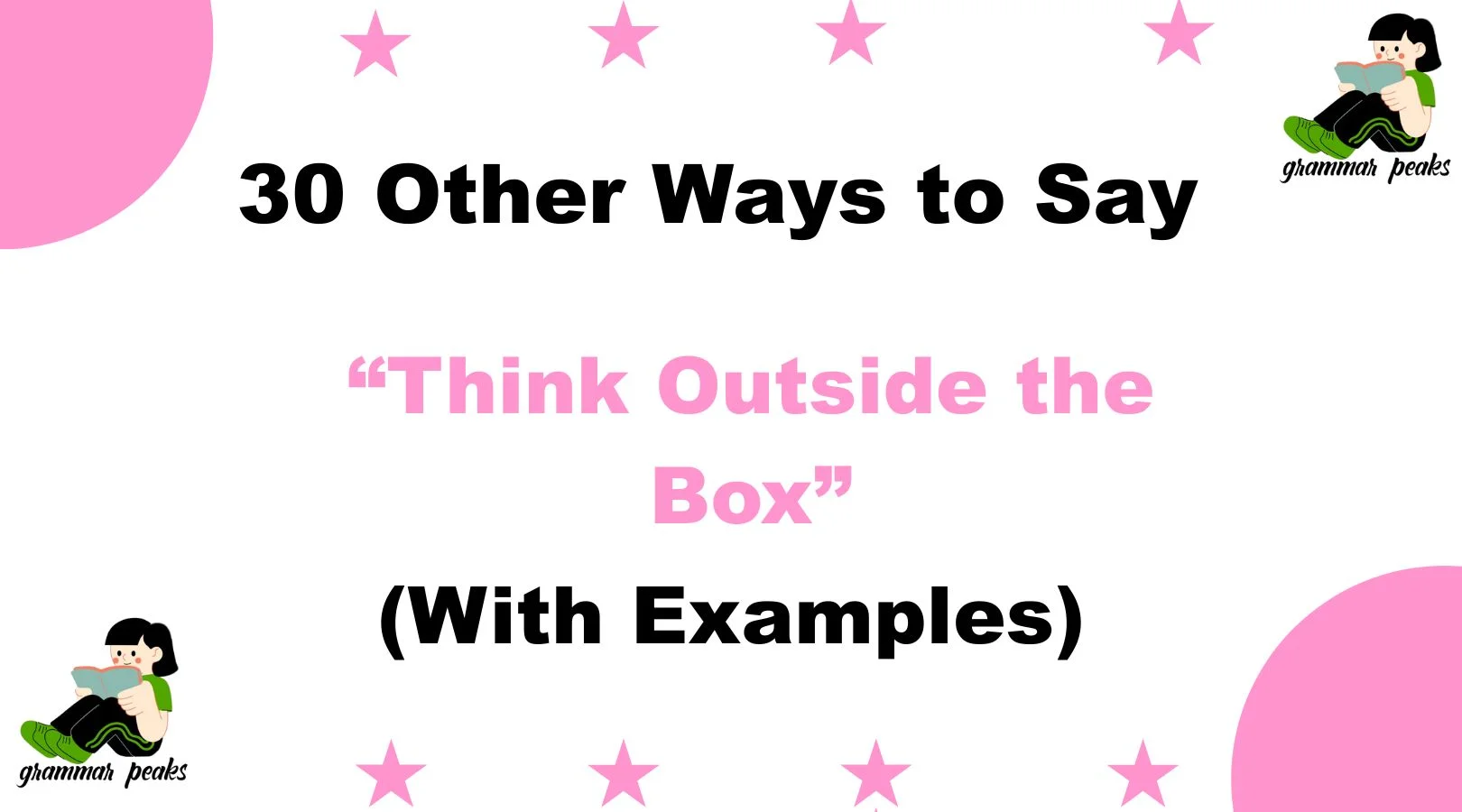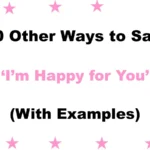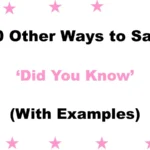Finding the right words to express yourself warmly and thoughtfully can make a huge difference in how your message is received. Saying “think outside the box” is common, but sometimes it feels overused or a bit impersonal. Using alternative phrases can help you connect more meaningfully with others, showing care and creativity in your communication.
Whether you want to inspire innovation, encourage fresh ideas, or simply express yourself in a more genuine way, this list offers 30 empathetic and engaging alternatives. Each phrase includes clear explanations, examples, and tips on when to use it to make your words truly count.
What Does “Think Outside the Box” Mean?
The phrase “think outside the box” means to approach a problem or situation in a creative and unconventional way. Instead of sticking to traditional methods or common ideas, it encourages looking beyond the usual boundaries to find new solutions or perspectives.
It’s about breaking free from normal thinking patterns and exploring fresh, innovative possibilities that others might overlook. This mindset often leads to original ideas and breakthroughs that wouldn’t happen by following standard rules or habits.
When to Use “Think Outside the Box”
Use this phrase when you want to encourage creative problem-solving or inspire someone to explore ideas beyond the obvious. It works well in brainstorming sessions, innovation-driven projects, or when traditional approaches have failed. However, be mindful of your audience—sometimes a softer or more personalized phrase might resonate better.
Is It Professional/Polite to Say “Think Outside the Box”?
Generally, yes—it is professional and polite. It’s widely accepted in business, education, and creative fields. But because it’s very common, using alternative expressions can make your communication stand out and feel more genuine or tailored.
Pros and Cons of Saying “Think Outside the Box”
Pros:
- Encourages creativity and innovation
- Easy to understand
- Motivates problem-solving
Cons:
- Overused and may sound cliché
- Can feel impersonal or generic
- Might not resonate emotionally with all audiences
Synonyms for “Think Outside the Box”
- Break the Mold
- Step Off the Beaten Path
- Push the Boundaries
- Color Outside the Lines
- Think Beyond the Horizon
- Blaze a New Trail
- See Beyond the Obvious
- Challenge the Status Quo
- Explore New Frontiers
- Go Against the Grain
- Look at It from a Different Angle
- Step Into Uncharted Territory
- Rethink the Rules
- Take a Fresh Approach
- Open New Doors
- Reimagine the Possibilities
- Shake Things Up
- Dare to Be Different
- Expand Your Horizons
- Break New Ground
- Cast Aside Convention
- Think in New Dimensions
- Look Beyond the Norm
- Create Your Own Path
- Venture Beyond Limits
- Step Outside Familiar Ground
- Unlock New Perspectives
- Rewrite the Playbook
- Embrace Originality
- Innovate with Intention
1. Break the Mold
Definition: To do something in a way that is different from what is traditional or expected.
Explanation: This phrase encourages people to reject old patterns and create new ones. It inspires boldness in creating original ideas.
Example: “To solve this problem, we need to break the mold and try a completely new strategy.”
Best Use: When encouraging innovation in an established environment.
Worst Use: In highly regulated or safety-critical contexts where deviation could be risky.
Tone: Bold, encouraging, confident.
2. Step Off the Beaten Path
Definition: To take an unconventional route or approach.
Explanation: Suggests leaving familiar territory and exploring new, less common ideas or methods.
Example: “Let’s step off the beaten path and brainstorm some fresh solutions.”
Best Use: Creative projects or exploratory discussions.
Worst Use: When clear rules or protocols must be followed strictly.
Tone: Adventurous, thoughtful, open-minded.
3. Push the Boundaries
Definition: To challenge limits and go beyond what is typically accepted.
Explanation: Encourages expansion of thinking beyond accepted norms or limits.
Example: “We need to push the boundaries of conventional marketing to stand out.”
Best Use: When seeking to innovate or evolve existing ideas.
Worst Use: In situations requiring caution or adherence to strict standards.
Tone: Ambitious, energetic, daring.
4. Color Outside the Lines
Definition: To think or behave in a way that is unconventional.
Explanation: Draws from the idea of creativity beyond set boundaries, like coloring outside the lines in a drawing.
Example: “Don’t be afraid to color outside the lines with your design.”
Best Use: Artistic or creative contexts.
Worst Use: Formal or highly structured environments.
Tone: Playful, creative, encouraging.
5. Think Beyond the Horizon
Definition: To imagine possibilities beyond the immediate or obvious.
Explanation: Invites looking far ahead and envisioning innovative solutions not limited by current constraints.
Example: “We must think beyond the horizon to future-proof our business.”
Best Use: Strategic planning or visionary discussions.
Worst Use: When short-term solutions are urgently needed.
Tone: Inspirational, visionary, hopeful.
6. Blaze a New Trail
Definition: To create a new path or method where none existed before.
Explanation: Implies pioneering and leading the way into unknown areas.
Example: “Our team is ready to blaze a new trail in renewable energy.”
Best Use: When introducing innovative products or ideas.
Worst Use: In routine or highly controlled processes.
Tone: Bold, pioneering, confident.
7. See Beyond the Obvious
Definition: To notice or consider things that are not immediately apparent.
Explanation: Encourages deeper insight and understanding beyond surface-level thinking.
Example: “Try to see beyond the obvious and find hidden opportunities.”
Best Use: Problem-solving or analytical tasks.
Worst Use: When quick, straightforward answers are needed.
Tone: Thoughtful, reflective, insightful.
8. Challenge the Status Quo
Definition: To question or oppose existing practices or beliefs.
Explanation: Encourages re-examining established norms to create improvement or change.
Example: “We need to challenge the status quo to stay competitive.”
Best Use: Change management or innovation initiatives.
Worst Use: In conservative settings resistant to change.
Tone: Assertive, courageous, reformative.
9. Explore New Frontiers
Definition: To investigate or try ideas that have not been explored before.
Explanation: Implies curiosity and willingness to experiment with unknown possibilities.
Example: “Our R&D department is eager to explore new frontiers in AI technology.”
Best Use: Research, development, or adventurous projects.
Worst Use: In predictable or risk-averse contexts.
Tone: Curious, exploratory, optimistic.
10. Go Against the Grain
Definition: To act differently from the majority or what is customary.
Explanation: Suggests deliberate nonconformity for a positive reason, often innovation.
Example: “Sometimes you have to go against the grain to create something unique.”
Best Use: When advocating bold or unconventional ideas.
Worst Use: When consensus or unity is critical.
Tone: Rebellious, confident, independent.
11. Look at It from a Different Angle
Definition: To consider a problem or situation from a new or different perspective.
Explanation: This phrase invites stepping back and re-examining something with fresh eyes to find alternative solutions.
Example: “Let’s look at it from a different angle to uncover options we haven’t thought of yet.”
Best Use: When encouraging thoughtful reconsideration or empathy in discussions.
Worst Use: When quick decisions are necessary without much time for reflection.
Tone: Reflective, open-minded, gentle.
12. Step Into Uncharted Territory
Definition: To move into an area or situation that is new and unknown.
Explanation: Emphasizes courage and openness to exploration beyond familiar boundaries.
Example: “Launching this product means we’re stepping into uncharted territory, but it’s worth the risk.”
Best Use: When facing innovative projects or ventures with uncertainty.
Worst Use: When a predictable or tested approach is required.
Tone: Brave, adventurous, optimistic.
13. Rethink the Rules
Definition: To question and possibly change the existing guidelines or norms.
Explanation: Suggests challenging conventions to improve or innovate.
Example: “It’s time to rethink the rules of how we manage our workflow.”
Best Use: When current systems are outdated or inefficient.
Worst Use: In strict regulatory or safety-critical environments.
Tone: Bold, transformative, questioning.
14. Take a Fresh Approach
Definition: To try a new method or idea instead of using the usual one.
Explanation: Encourages renewing efforts with creativity and openness.
Example: “Let’s take a fresh approach to attract more customers.”
Best Use: When current strategies are stagnant or failing.
Worst Use: When consistency is essential.
Tone: Encouraging, hopeful, practical.
15. Open New Doors
Definition: To create opportunities that were not previously available.
Explanation: Implies expanding possibilities and welcoming new ideas or paths.
Example: “Innovative thinking can open new doors for business growth.”
Best Use: When discussing opportunity creation or growth strategies.
Worst Use: When focus on current resources or constraints is critical.
Tone: Positive, hopeful, inspiring.
16. Reimagine the Possibilities
Definition: To envision new ways something can be done or new outcomes that can be achieved.
Explanation: Encourages imaginative and visionary thinking beyond current limitations.
Example: “We need to reimagine the possibilities for a sustainable future.”
Best Use: In creative, visionary, or long-term planning contexts.
Worst Use: When practical or immediate solutions are required.
Tone: Visionary, imaginative, optimistic.
17. Shake Things Up
Definition: To make changes that break the routine or status quo.
Explanation: Suggests disruption to create excitement or innovation.
Example: “Sometimes you have to shake things up to get better results.”
Best Use: When existing methods are ineffective or boring.
Worst Use: When stability and predictability are priorities.
Tone: Energetic, disruptive, informal.
18. Dare to Be Different
Definition: To have the courage to stand out by being unique or unconventional.
Explanation: Encourages individuality and risk-taking in ideas or actions.
Example: “Great leaders dare to be different and inspire others.”
Best Use: When promoting originality or boldness.
Worst Use: When conformity is necessary or preferred.
Tone: Confident, inspiring, empowering.
19. Expand Your Horizons
Definition: To broaden your knowledge, experience, or perspective.
Explanation: Encourages learning and openness to new ideas or cultures.
Example: “Travel and new experiences can help you expand your horizons.”
Best Use: When encouraging growth, learning, or cultural openness.
Worst Use: When focus on specialization is needed.
Tone: Warm, encouraging, educational.
20. Break New Ground
Definition: To do something innovative or pioneering.
Explanation: Implies creating new paths where none existed before.
Example: “This technology is breaking new ground in renewable energy.”
Best Use: When highlighting innovation or pioneering work.
Worst Use: When incremental or proven approaches are better.
Tone: Ambitious, proud, innovative.
21. Think Beyond the Obvious
Definition: To consider ideas or solutions that aren’t immediately apparent.
Explanation: Encourages digging deeper and looking past surface-level answers.
Example: “To solve this problem, we need to think beyond the obvious.”
Best Use: When deeper insight or creativity is needed.
Worst Use: When quick, straightforward decisions are required.
Tone: Thoughtful, insightful, encouraging.
22. Look Beyond the Horizon
Definition: To envision possibilities that lie ahead in the future.
Explanation: Suggests forward-thinking and long-term vision.
Example: “Successful leaders look beyond the horizon to plan strategically.”
Best Use: When planning or preparing for future developments.
Worst Use: When immediate action is urgent.
Tone: Visionary, optimistic, strategic.
23. Challenge the Status Quo
Definition: To question and oppose existing conditions or norms.
Explanation: Encourages critical thinking and pushing for change.
Example: “We should challenge the status quo to foster innovation.”
Best Use: When established practices need improvement.
Worst Use: When stability and tradition are critical.
Tone: Bold, rebellious, transformative.
24. Venture Off the Beaten Path
Definition: To explore unusual or less common options or ideas.
Explanation: Implies choosing creative or unconventional routes.
Example: “To stand out, sometimes you must venture off the beaten path.”
Best Use: When creativity or uniqueness is valued.
Worst Use: When proven methods are safer or required.
Tone: Adventurous, creative, informal.
25. Blaze a Trail
Definition: To be the first to do something new or innovative.
Explanation: Highlights leadership and pioneering efforts.
Example: “She’s blazing a trail in sustainable fashion.”
Best Use: When celebrating innovation or leadership.
Worst Use: When collaboration or tradition is preferred.
Tone: Inspirational, proud, motivational.
26. Get Creative
Definition: To use imagination and original ideas to solve problems.
Explanation: Encourages thinking freely and inventively.
Example: “Let’s get creative with our marketing strategy.”
Best Use: When innovation and freshness are needed.
Worst Use: When strict guidelines or rules apply.
Tone: Friendly, encouraging, playful.
27. Look Outside Your Comfort Zone
Definition: To explore ideas or activities beyond familiar or easy areas.
Explanation: Invites risk-taking and growth through new experiences.
Example: “Growth happens when you look outside your comfort zone.”
Best Use: When encouraging personal or professional development.
Worst Use: When stability and consistency are needed.
Tone: Supportive, motivational, warm.
28. Think in New Dimensions
Definition: To approach a problem from multiple or complex perspectives.
Explanation: Suggests expanding one’s mental framework creatively.
Example: “To innovate, we must think in new dimensions.”
Best Use: In complex problem-solving or creative brainstorming.
Worst Use: When simplicity and clarity are required.
Tone: Intellectual, imaginative, inspiring.
29. Innovate Beyond Boundaries
Definition: To create new ideas or methods that go past traditional limits.
Explanation: Encourages bold and unrestricted creativity.
Example: “Our company thrives when we innovate beyond boundaries.”
Best Use: When pushing the limits of technology or ideas.
Worst Use: In highly regulated or cautious environments.
Tone: Ambitious, daring, futuristic.
30. Break the Mold
Definition: To do something differently from the usual way.
Explanation: Implies rejecting conventional norms to create something unique.
Example: “Artists who break the mold often redefine their field.”
Best Use: When originality and change are celebrated.
Worst Use: When conformity is necessary.
Tone: Confident, rebellious, creative.
Conclusion
Finding the right words to express the idea of “think outside the box” can add warmth and care to your communication. Each alternative offers a unique way to encourage creativity, innovation, and fresh perspectives while resonating emotionally with your audience. Whether you want to be bold, gentle, or inspirational, selecting the right phrase can make your message more meaningful and impactful.
Frequently Asked Questions
1. What does “think outside the box” really mean?
“Think outside the box” means to approach problems or situations in a creative, unconventional way rather than relying on standard or traditional methods. It encourages fresh perspectives and innovative solutions.
2. When is it best to use alternatives to “think outside the box”?
Using alternatives is best when you want to personalize your message, sound more empathetic, or tailor your communication to specific audiences. It helps keep your language fresh, engaging, and more meaningful.
3. Are these alternatives suitable for professional settings?
Yes, many of the alternatives like “take a fresh approach” or “challenge the status quo” are perfectly professional and polite. However, some phrases may be more casual or bold, so choose based on your audience and context.
4. How can using different phrases improve my communication?
Using a variety of expressions shows your thoughtfulness and helps you connect better with others. It can make your ideas stand out and feel more authentic, preventing your language from sounding repetitive or cliché.
5. Can these phrases inspire creativity in teams or individuals?
Absolutely! Phrases like “reimagine the possibilities” or “break new ground” can motivate teams or individuals to embrace innovation and explore new solutions with enthusiasm and confidence.






